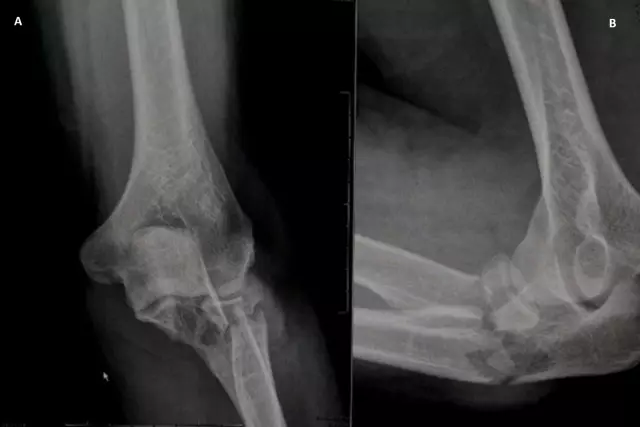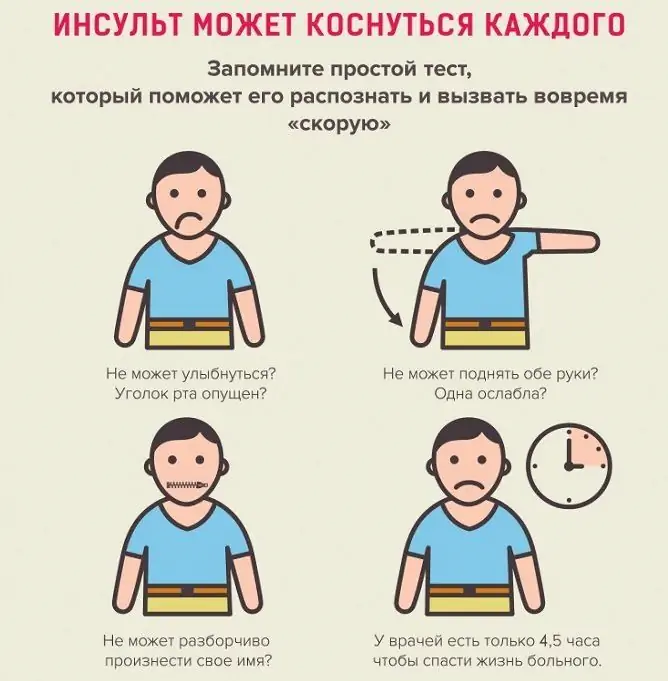- Author Rachel Wainwright [email protected].
- Public 2023-12-15 07:39.
- Last modified 2025-11-02 20:14.
Fracture of the foot

A fracture of the foot requires special attention and careful care, since each bone in the foot is closely interconnected with others, any displacement or damage to one bone can lead to disruption or deformation of others. Also, as a result of a foot fracture, diseases of the musculoskeletal system, for example, flat feet or arthrosis, can develop. Foot fractures account for approximately 2.5-10% of all fractures.
Causes of the foot fracture
A fracture of the bones of the foot can occur due to:
• kicking;
• landing on your feet while jumping from a great height;
• falling of heavy things on the foot;
• subluxation of the foot while walking on uneven surfaces.
Types of foot fracture
1. Fracture of the bones of the digital phalanges;
2. Fracture of the metatarsal bone of the foot (including a fracture of the 5th metatarsal bone of the foot);
3. Fracture of the tarsal bone.
Signs of a broken foot
Common symptoms of a fracture of the bones of the foot are pain and swelling of the tissues adjacent to the fracture site.
Symptoms of a fracture of the metatarsal bone of the foot (including a fracture of the 5th metatarsal bone of the foot):
• deformation of the foot;
• pain during palpation and support on the foot;
• swelling on the sole and sometimes the back of the foot.
Symptoms of a fracture of the bones of the digital phalanges:
• the presence of hematomas;
• pain during movement and palpation;
• swelling and blue discoloration of a sore finger.
Symptoms of fractures of the tarsal bones of the foot:
• hemorrhages on the skin;
• sharp pain during the turns of the foot and support on it;
• swelling of soft tissues in the ankle joint and the site of the fracture.
Symptoms of a displaced foot fracture:
• noticeable swelling of the entire foot;
• severe deformation of the foot;
• sharp pains at the fracture site.
Foot fracture treatment

Metatarsal bones. During normal fractures, a plaster splint is applied for one month. In cases where the fragments are displaced, the bones are set in a closed way and fixed with a plaster cast for six weeks.
Tarsal bones. If there is no displacement, a circular plaster splint is fixed for a period of three weeks to five to six months. If there are displacements of bone fragments, they are repositioned (restoration of the desired position) and skeletal traction is applied.
Bones of the digital phalanges. A plaster cast is applied for up to six weeks, depending on the severity of the fracture. If there is a displacement, the bone fragments are additionally fixed with pins.
Minor cracks and fractures in the bones of the foot can be treated without the use of plaster casts. In such cases, the foot is fixed with a bandage or special protective shoes. Crutches are used to reduce the load on the foot.
Sometimes oral medications are also prescribed. Often, these are anti-inflammatory and vitamin preparations.
Recovering from a foot fracture
The rehabilitation period depends on the duration of the fixation bandage and the severity of the fracture.
If there is a fracture of the metatarsal bone of the foot, it is recommended to engage in gentle physical therapy for two months. Sometimes during this there may be swelling of the foot. If there was a displacement after fixation with plaster, it is replaced with a back plaster bandage with a thickening on the heel (heel), which must be worn for another two to three weeks. After the cast is removed, the patient will need to use orthopedic insoles.
Fractures of the tarsal bones require a longer recovery period. Shown are massage, physiotherapy, gentle physical education and the wearing of instep supports. For two to three months, all rehabilitation activities should be carried out under the supervision of doctors. The instep supports are worn for at least one year.
If there was a fracture of the digital phalanges, the patient needs a kneading massage every day. It is also advisable to wear orthopedic shoes for at least five months.
YouTube video related to the article:
The information is generalized and provided for informational purposes only. At the first sign of illness, see your doctor. Self-medication is hazardous to health!






